Trending
Opinion: How will Project 2025 impact game developers?
The Heritage Foundation's manifesto for the possible next administration could do great harm to many, including large portions of the game development community.

Featured Blog | This community-written post highlights the best of what the game industry has to offer. Read more like it on the Game Developer Blogs or learn how to Submit Your Own Blog Post
Our recent Kickstarter campaign to fund the final stages of development of our upcoming puzzle-platforming adventure game, Me And My Dinosaur, was a failure. We discuss the preparations we made before launch, our campaign stats, and where we went wrong.

Let’s not mince words: our recent Kickstarter campaign to fund the puzzle-platforming adventure game Me And My Dinosaur was a failure.
We knew we were off to a bad start within the first two days of the campaign. Never the less, we were still hurt and confused as the clock struck 9:00 AM on May 14th, effectively shutting down our campaign at only a paltry 15% of our funding goal. We couldn’t help but wonder: Why didn’t people back us? Why didn’t major press outlets cover the campaign? Where exactly did we go wrong?
Well, it’s been a few weeks now since the Me And My Dinosaur campaign wrapped up, and our team has had some time to nurse their wounds and reflect. To understand where the Kickstarter went off the rails, we need to rewind the clock back to when we first starting planning the Kickstarter campaign, way back in February of 2016.
We’d been working on the Unity build of Me And My Dinosaur (MAMD) since May of the previous year and we were quickly approaching the investment point of no return (that is to say our lives had been reduced to a formulaic schedule of work, sleep, and cup ramen). We’d successfully run a Kickstarter campaign once before in 2011 to print the first chapter of our fantasy webcomic, Aikonia, and so we had a meeting (and then several more meetings) to discuss the possibility of using crowdfunding to speed up the development process for MAMD. “Sure,” we said to ourselves. “Kickstarter has changed since 2011, but the basic rules surely still apply.”
And while we weren’t entirely wrong, we were still woefully unprepared for how difficult the campaign was going to be.
One of the first things we sat down to figure out was our numbers. How much money do we need to make MAMD and have it launch in October? What kind of rewards should we offer and how should they be priced? What kind of stats do we need for Kickstarter to feature our project?
The money question was not as cut and dry as we might have liked. We spent weeks formulating spreadsheets, making sure our initial ask would be enough to help us complete the game, but not so much that backers would balk at the price. Reward fulfillment and Kickstarter fees had to be taken into account, adding an extra 37% (9% for KS + transfer fees & 28% for reward costs) to the total. The biggest portion of our ask of $60,000 CAD was to bring on a second developer so that our lead developer, Andrew-David, could occasionally sleep. Unfortunately for us, MADSOFT Games is a Canadian company, which meant according to Kickstarter’s rules, we had to run the campaign in Canadian Dollars. Assuming Americans believed we were asking for $60k USD instead of $60k CAD, MAMD may have looked like it would be more expensive than it actually was, which already put us at small disadvantage.
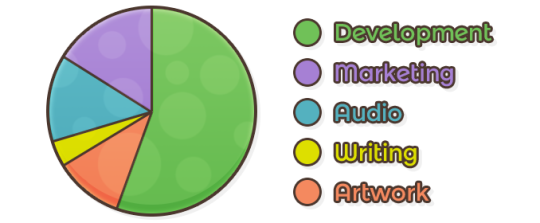
The stated “ideal” timeframe for a crowdfunding campaign varies wildly between sources (see our notes below), but we ended up settling on April 12th, giving us time to create materials for the campaign while still being able to devote time to actually developing MAMD itself. The April-May timeframe neatly coincided with one of Edmonton’s gaming conventions, GDX 2016, which we hoped to leverage for additional support during the final days of the campaign. We spent a not insignificant amount of time debating the merits of a morning launch versus an evening launch, but eventually agreed to push hard for the first day and go for a mid-morning kickoff, even knowing that could hurt us at the end of the campaign.
Launch Timeframe Notes:
Plan to launch on a Tuesday, Wednesday, or Thursday.
Launch around the late morning (between 9AM and noon EST)
Consider when most employees are paid (1st and 15th).
Don't have the project end around when most bills are due.
Don't launch or have the project end around a holiday.
Sources:
Knowing the importance Kickstarter placed on quick revenue, we put together a few early bird tiers to encourage people to back early. The discounts on the tiers were reasonable, sliding down from the usual price of $20 CAD to only $13 CAD for a digital copy of the game. We also put together an early bird tier for the Digital Deluxe Edition which included digital copies of the artbook, soundtrack, and Kickstarter-exclusive DLC.
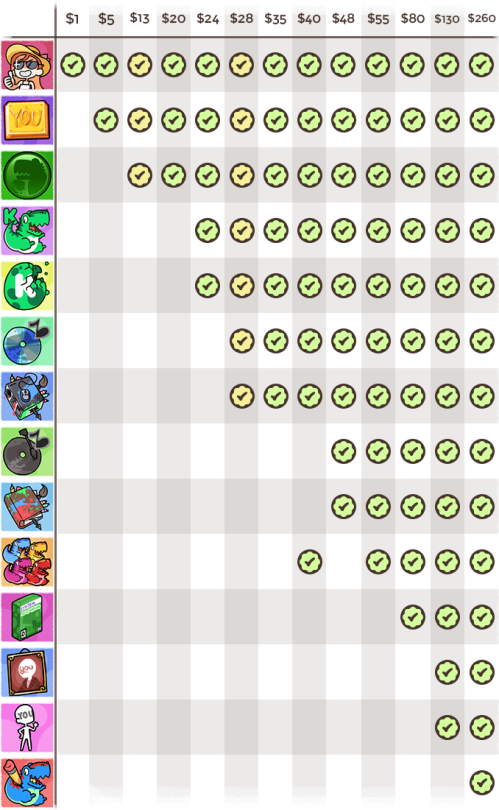
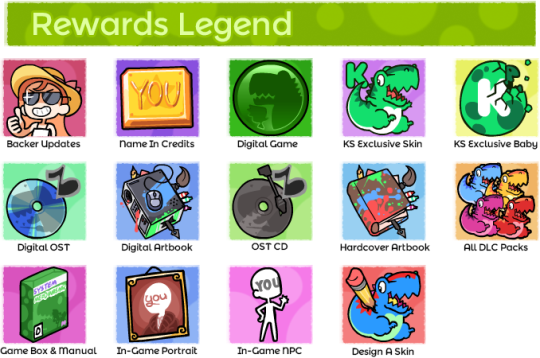
Physical rewards were a big sticking point for us. As we learned from the Aikonia Kickstarter, shipping is basically a Lovecraftian nightmare. And while Kickstarter has since remedied the shipping costs issues we experienced during our 2011 campaign, we still aired on the side of very few physical rewards. In our attempt to keep the campaign unbloated and lean, we opted to only produce physical copies of the artbook, soundtrack, and game itself. We later learned that many backers would have appreciated branded merchandise, and our lack of physical rewards may have hurt our chances of pulling in backers at higher tiers.
Outside of the campaign itself, we knew we had to have a solid online presence. Our website and press kit had already been refined before we ever announced the campaign, and we hoped that this would have given us an air of legitimacy (especially for those who might be wary of backing a small indie game company on Kickstarter).
One thing we heard time and time again during the campaign was that the Kickstarter page for MAMD was very professional and engaging. We kept the text to a minimum, only detailing the absolute basics of the game, and splashed the page with fun and bouncy gifs and illustrations. We covered all the major categories (Gameplay, Story, Rewards, Funding Allocation, and The Team) while attempting to put a dash of personality into the sales pitch. People liked it.
But we goofed on the trailer. After the campaign concluded, we heard that people had gotten the wrong impression about MAMD from the gameplay trailer. They assumed that the game would be an action co-op game rather than the relatively slow-paced, puzzle-heavy platformer that it actually is. The trailer was admittedly one of the last things we worked on leading up to the campaign (partially because of the time constraints and partially because we were editing the trailer ourselves), and there is no doubt this misunderstanding of the game hurt us. Beyond the gameplay parts of the video, the pitch itself was too long, the entire Kickstarter video clocking in at a hefty six minutes and fifteen seconds.
One of our biggest failings when we put together the MAMD Kickstarter was overestimating the engagement of our newsletter subscribers and social media followers. It wasn’t for lack of trying to get their attention however.
We had some good success with a pre-launch newsletter, giving our subscribers a sneak peek of the Kickstarter page and, in turn, receiving valuable feedback about the upcoming campaign. After the Kickstarter went live, we did our very best to post regular updates and backer-exclusive content to keep those that pledged involved. Every time someone backed the campaign, we made sure to thank them directly and answer any questions about the game or the campaign they may have had. We ran cross-promotions with other Kickstarter campaigns we liked, including them at the end of each update post. We also got a fair amount of cross traffic from our concurrent Steam Greenlight campaign, which was, incidentally successful (thanks, Valve).
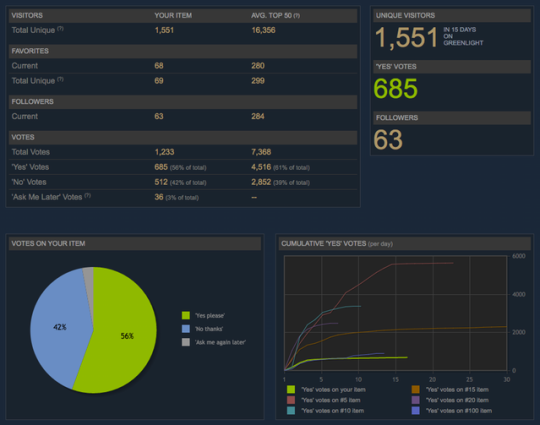
We think we can trace the lack of involvement from our subscribers back to our relatively inconsistent developer blogs and involvement in the online indie game space prior the Kickstarter announcement. The truth is that we were often too busy building MAMD to bother with regular updates, and we sincerely thought that ramping up our interactions in the two weeks before the campaign would be enough. (Hint: It definitely wasn’t.)
In addition to our regular email newsletters, we shared the Kickstarter everywhere we could think to share it: in Facebook groups, on Twitter, in Slack teams, on Tumblr, everywhere. We ran a moderately successful Thunderclap in the last few days, but even that wasn't enough to boost our numbers. The only website we didn’t actively campaign on was Reddit. It’s not a community we’re familiar with and it has the (perhaps undeserved) reputation of being a little, well, awful. But Reddit is an important part of internet culture. Memes and trends begin and end on Reddit; they are often tapped into the pulse of what is popular. Neglecting Reddit was a big mistake, one we don't plan to replicate going forward.
Finally, we should have reached out to our developer friends, game studios, and YouTubers/Streamers way before the campaign was set to launch. A month of meetings would have given us a better chance at nailing down details for potential involvement (such as IP-themed skins for the character sprites) as well as grabbing some juicy quotes about the game from these heavy-hitters.
Unlike in 2011, there is — and we’re using scientific terminology here— approximately one metric butt-tonne of tools and apps available for developers looking to run a Kickstarter campaign. Here’s what we used to optimize our campaign, for better or for worse:
Mention: This cool little tool let us know when people were talking about us and the game! With that knowledge, we were able to go and talk to potential backers in their communities directly.
BufferApp: Running a Kickstarter campaign ate into our every waking moment, but even we aren’t total automatons. How then to post to our social media accounts when we weren’t at our computers? BufferApp, of course!
Google Analytics: If you’re a developer and you’re serious about making a living building games, you need to get acquainted with Google Analytics, no ifs, ands, or buts about it.
MailChimp: Before and during the Kickstarter campaign, we tried out very best to ensure that we would only send out newsletters when we had something important to say. Just like Google Analytics, MailChimp allowed us to monitor the success of our marketing efforts. It also let us know that our click-through rate was actually really good for press (40.6%), but not so great for our newsletter (16.8%).
Kicktraq: Kicktraq proved vital to understanding trends in our campaign. It also helpfully let us know early on that we were very, very far off from running a successful campaign. So thoughtful, that Kicktraq.
Backerkit: While we didn’t end up using Backerkit, we still think it’s currently the best option for managing your rewards and communicating with your backers post-campaign.
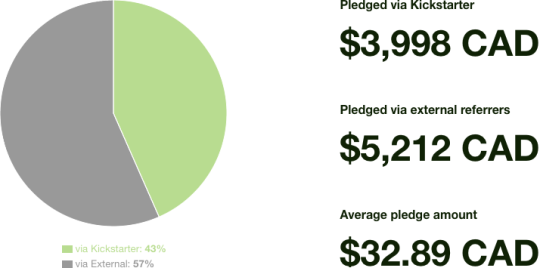
We were surprised to see that we got more pledges from external referrers than from Kickstarter. According to Google Analytics, our biggest referrers were Facebook, the Aikonia webcomic, and Tumblr. Out of the few blogs and podcasts that covered us, Siliconera was the one that got us the most referrers.

While we the Kickstarter pitch video was embedded in a few places (some blogs that covered us, Tumblr, the Aikonia website, etc), it seems that the video got the most plays on the Kickstarter page itself. We wish Kickstarter provided more video stats though. It states that 10.97% of plays were completed, but it doesn’t inform us at what marks people stopped watching. This would be really useful.
However, Google Analytics tells us the number of page views the campaign got and, based on that data, we can estimate that about 29% of visitors actually played the video.
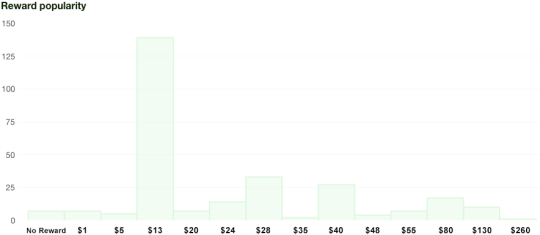
The most popular reward, as expected, was the one that offered the game and nothing else at an early bird price. Although our limited tiers ($130 and $260) were also sold out almost immediately!
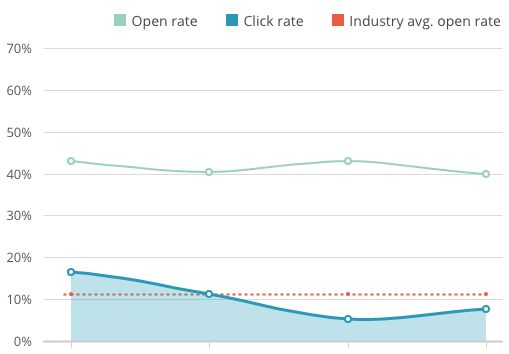
Here are the four press newsletters we sent out through MailChimp during the campaign. We did send out more than four email bursts, but some were in the form of direct text emails rather than using MailChimp for a more authentic approach. You’ll notice that the open rate was way over the industry average and the click rate was acceptable. A decent amount of larger blogs (Kotaku, Polygon, etc) actually opened each email several times, We’re assuming they were debating whether or not it’s worth writing about.

The subscriber newsletters, however, did not do as well. The first three emails were sent out before the launch of the campaign. The one with the most opens being “A Special Me And My Dinosaur Announcement” – where we announced the Kickstarter and requested for feedback. The fourth email is the one we sent out at the launch of the Kickstarter, and you’ll notice that the open rate was, for the most part, below the industry average.
Almost all the emails after the initial launch one include the word “Kickstarter” in their titles, except for the sixth email (the bump) that was titled “2 Weeks Left To Become A Backer!”. Because of this, we think it might be safe to conclude that mentioning Kickstarter in the newsletter title is not effective.
The nail in our Kickstarter’s coffin was our lack of press coverage. Simply put, not enough eyes were coming to the Kickstarter page. Even websites that specialize in Kickstarter games, like the Cliqist, weren’t picking us up for coverage. This — more than any of our other mistakes— is what keeps us awake at night. Now, we don’t want to completely push the blame off ourselves and say that the media is done with Kickstarter coverage, but from where we stand, things are looking mighty bleak.
Not all is lost, however. Kickstarter games occasionally do get coverage. So, for your convenience, here is a brief list detailing of some of the ways we think you can grab press coverage from major news outlets for your Kickstarter game:
Be in a team consisting of industry veterans where at least one of you has been heavily involved in a successful or critically-acclaimed game project or company.
Find a celebrity (Voice actors, YouTubers, or Streamers especially) and have the money to pay them for their support or involvement in your game.
Make a game that relies on nostalgia. Whether it’s a sequel to a game, a revival, a reboot, or a spiritual successor, drawing on people’s nostalgia cracks open wallets fast on Kickstarter.
Make a game that everyone else is already making… but a little different. As we're writing this article, the current big trends include survival games, crafting mechanics, arena combat, “walking simulators”, first-person horror titles, and tactical RPGs. Pick one or two of those and then make that game.
Make a lot of money really fast. People are more likely to back a project that is already successful, and journalists are not immune from that simple fact. Have your rich aunt Beckie throw in a couple thousand dollars in the first few hours to give you that boost.
Make a dark pact with an old god.
Of course, the reason MAMD didn’t get tons of press coverage might have nothing to do with us failing to meet any of the above criteria. After the campaign ended, we did reach out to various members of the press to find out why our game didn’t make the cut, but as of this article, we’re still in the dark about exactly why our game turned so many people away.
One thing we haven't touched on yet is our lack of a demo. We're inclined to think that might have hurt us, especially since our trailer was misleading and we're still a small, relatively unknown entity.
As of right now, we're still recovering from the whirlwind that is Kickstarter. We're continuing development on Me And My Dinosaur, but the speed has slowed down substantially as we turn our attention to figuring out our next steps.
We may yet revisit the idea of a crowdfunding campaign, but we know we’d need to make some major changes to the trailer, Kickstarter pitch video, and the ways we contacted members of the press. Heck, if you've got some insight into where we went wrong, let me us know in the comments below. We are always looking for more feedback.
If you enjoyed this article and you’d like to keep up to date with all things MADSOFT, you can follow us on Twitter and Facebook, subscribe to our newsletter, and check out our biweekly development updates on the MADSOFT Blog.
Read more about:
Featured BlogsYou May Also Like